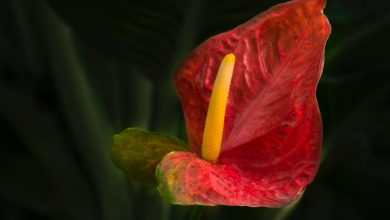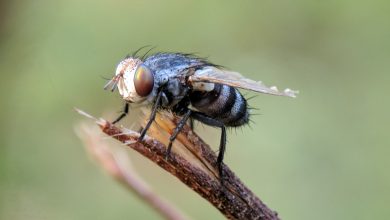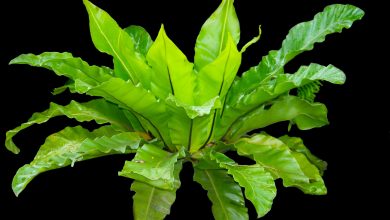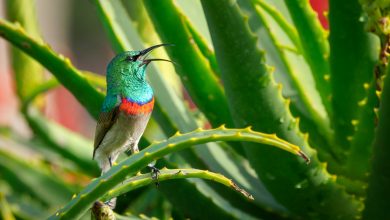9 Plants and Flowers that Evoke the Essence of Hawaii
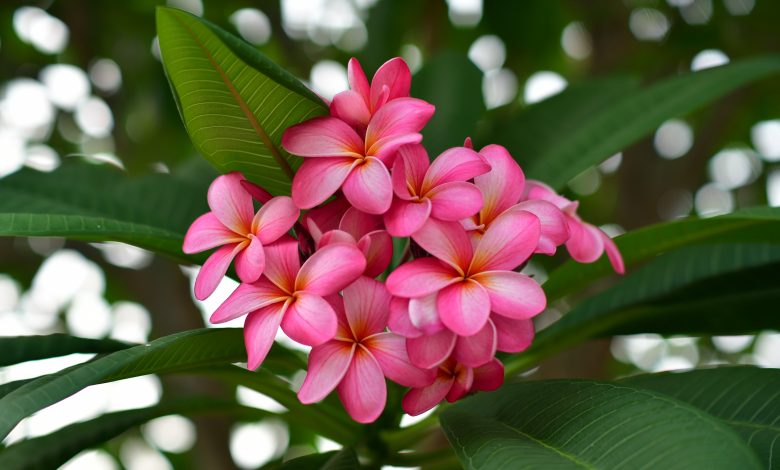
Hawaii is home to some of the most fascinating flowers and plants on the planet, and many of the flowers found in Hawaii cannot be found anywhere else in the world. The amount of remarkable flora and fauna found in Hawaii is seemingly limitless, so we focus on the plants and flowers that evoke the true essence of the Hawaiian Islands. If you happen to find yourself on one of these beautiful islands, be on the lookout for these uniquely intriguing plants and flowers.
Awapuhi

Scientific Name: Zingiber zerumbet
Life Cycle: Perennial
The Awapuhi is a member of the ginger family and can be seen throughout the islands. Also known as pinecone ginger and shampoo ginger, this plant is revered due to its incredible versatility. Hawaii can’t claim the awapuhi as a native plant, as Polynesians brought the original awapuhi over in their canoes. Once on the islands though, native Hawaiians took advantage of every aspect of this plant.
With its pleasant aroma, the awapuhi is known most for is its use as a shampoo. Liquid from the flower was used to wash and condition hair, and also to moisturize the skin.
The Awapuhi had many other uses beyond its surprising shampoo characteristics. The leaves of the plant were wrapped around food and used for flavor in the imu, an underground oven. In ancient Hawaii, the clothing and bedding were all made from the inner bark of trees. Awapuhi roots were dried and ground into a powder, which was folded into clothes and bedding as a finishing touch.
Fresh Awapuhi also had medicinal uses. The roots were ground down and used to settle upset stomachs. In addition, it was used to relieve toothaches. The root was cooked to soften it and then placed on top of the tooth.
When visiting Hawaii, you can find this plant growing in the wild throughout any forested area. It will likely be found hiding in a moist, shaded part of the forest.
Anthurium

Scientific Name: Anthurium andraeanum
Life Cycle: Perennial
Did you know that a flower could be patented? While the beautiful anthurium is not native to Hawaii, soon after it arrived on the island, enthusiasts cultivated the flower. They created two unique versions, the Ozaki and the Starlight. The Starlight, also known as the “Flamingo Flower,” was the first anthurium to be patented, and gets its nickname from its deep pink color.
Anthuriums are native to Argentina and Northern Mexico but thrived once introduced to the tropics. The flower was initially brought to the islands in 1889 by Samuel Mills Damon, the Hawaiian Minister of Finance. After a trip to England, Damon came home with an anthurium stem and planted it in his garden, and it now blooms throughout the islands.
Anthuriums are easy to identify, as their waxy, heart-shaped petals envelop a long yellow pistil. The petals are often found in gorgeous shades of pink and red and are standouts in any garden.
Bird of Paradise

Scientific Name: Strelitzia reginae
Life Cycle: Perennial
Only two words can properly describe this flower: stunning beauty. It’s hard to know where to begin when portraying the exotic splendor of the bird of paradise. While the bird of paradise is not native to Hawaii, it became symbolic of the islands after famous painter Georgia O’Keefe painted her piece “White Bird of Paradise” after spending an extended time in Hawaii in the 1940s.
It doesn’t seem fair to other flowers that the bird of paradise should have so many colors blazing throughout every corner. The green stalk turns into a soft purple, which mixes with fuchsia, red, and pink before giving way to royal blues accented by supple, buttery yellows. One could stare at this bloom all day and not come up with the words to describe it adequately. An inarguable way to describe the bird of paradise is tropical utopia. One glance conjures up the warmth of the sun and the crashing of waves on a beach.
Originally from South Africa, the bird of paradise was known as the crane flower. While descriptive, the name “bird of paradise” is much more fitting for such a stunning bloom.
Hawaiian Hibiscus

Scientific Name: Hibiscus rosa-sinensis “Hawaiian Girl”
Life Cycle: Perennial
The official state flower of Hawaii, the yellow hibiscus, became the symbol of Hawaii when it officially became a state in 1959. The yellow hibiscus is highlighted by a deep fuchsia center that creeps across the velvety petals. The beauty of the Hawaiian hibiscus is fleeting though, as it blooms daily, but drops its petals at sunset.
Naupaka

Scientific Names: Scaevola taccada, Scaevola coriacea
Life Cycle: Perennial
Commonly known as “beach cabbage” and the “Hawaiian half flower,” there is more than meets the eye when it comes to this native Hawaiian plant. The blossoms from the naupaka are small, white, and sometimes slightly purple, with petals appearing on just one half of the flower. There are also two forms of the plant: naupaka kahakai, which grows on the beach, and naupaka kauihiwa, which grows in the mountains.
Continuing a common theme among Hawaiian plants, the naupaka flower features a pleasant scent. But the naupaka blooming in the mountains has a more pleasing smell than the version that grows near the beach. The different scents and unique half flowers of the naupaka form the basis of ancient Hawaiian folklore.
The legend begins with a Hawaiian princess named Naupaka, who tragically falls in love with a commoner named Kaui. As Kaui was not of noble birth, they were not allowed to marry. So Naupaka and Kaui traveled across the countryside and up a mountain to a temple to seek guidance. However, the kahuna at the temple told them that there was nothing they could do but pray. So the lovers hopelessly began to pray.
When they did, rain began to fall from the sky, and in one final embrace, naupaka took a flower from her ear, tore it in half to represent their broken hearts, and gave it to Kaui. She told him to go live by the water while she stayed up in the mountains. The naupaka plants growing nearby noticed their sadness and began blooming with just half flowers.
Ohia Lehua

Scientific Name: Metrosideros polymorpha
Life Cycle: Perennial
The unique ohia lehua blooms like very few other flowers. The most interesting part of the ohia lehua beyond its bristling blossoms is the legend behind the flower. As the plant that is the first plant to grow on lava flows after a volcano erupts, it’s no surprise that this flower fascinated native Hawaiians.
The story begins with a young man named Ohia, whose striking good looks attracted the attention of the volcano goddess Pele. However, Ohia rebukes Pele because he is already in love with a woman named Lehua. Pele does not take kindly to this rejection and turns Ohia into a twisted tree. Lehua begs the gods to change him back, but instead, they compromise, and Lehua is turned into a blossom on the ohia tree so that the two would be united forever. The legend continues that if you pick a lehua blossom from the tree, it will begin raining, symbolizing the tears of the two lovers.
Pikake

Scientific Name: Jasminum sambac
Life Cycle: Perennial
Pikake translates to peacock and gets its name from Hawaiian Princess Kailunai, who named it after her favorite bird. The pikake is infamous for its use in leis and is often adorned by brides and hula dancers. The pikake also features what some consider the most enthralling scent of all Hawaiian flowers. It’s no surprise, then, that the pikake scent is one of the most popular perfumes to come from Hawaii.
Plumeria

Scientific Name: Plumeria rubra
Life Cycle: Perennial
The supple splendor of the plumeria flower simply begs to be worn around your neck in a lei or adorned in your hair the minute you step foot on the Hawaiian Islands. The blossoms bloom from plumeria trees, which are easy to grow and are seen throughout the islands. The enveloping petals feature varying hues of pink and are highlighted with subtle shades of yellow at the center. Colors can range from peach and orange to fuchsia, to creamy white.
The plumeria looks so good that it wouldn’t be surprising if you wanted to take a bite of one, just to see if it tasted as terrific as it appears. And while, no, you cannot eat the flower, the plumeria produces an enchanting fragrance worthy of its exquisite appearance.
Uluhe Fern

Scientific Name: Dicranopteris linearis
Life Cycle: Perennial
The uluhe fern resembles many other ferns around the world, but this native Hawaiian plant has unique leaves that resemble a crocodile’s teeth. The fern commonly grows around volcanos and can grow as high as 20 feet tall. Uluhe ferns are found on the Big Island but can grow in almost any environment.
In ancient Hawaii, the uluhe fern had a medicinal purpose as well. Native Hawaiians would soak the fern in water for a period, and then drink the water as a cure for constipation.
